Smashing Ecommerce Conversion Targets: No-Nonsense Guide
You're in the ecommerce game. Your site's live, people are buying… but you’re not making as much as possible.
The cold, hard truth is that having a website up and running isn’t enough. You have to focus on those all-important conversion rates if you want your ecommerce biz to take off.
I know — turning random visitors into customers isn't easy. But don't worry! I will walk you through a simple, no-nonsense plan for smashing your ecommerce conversion targets!
Table of Contents
What Are Ecommerce Conversion Targets?
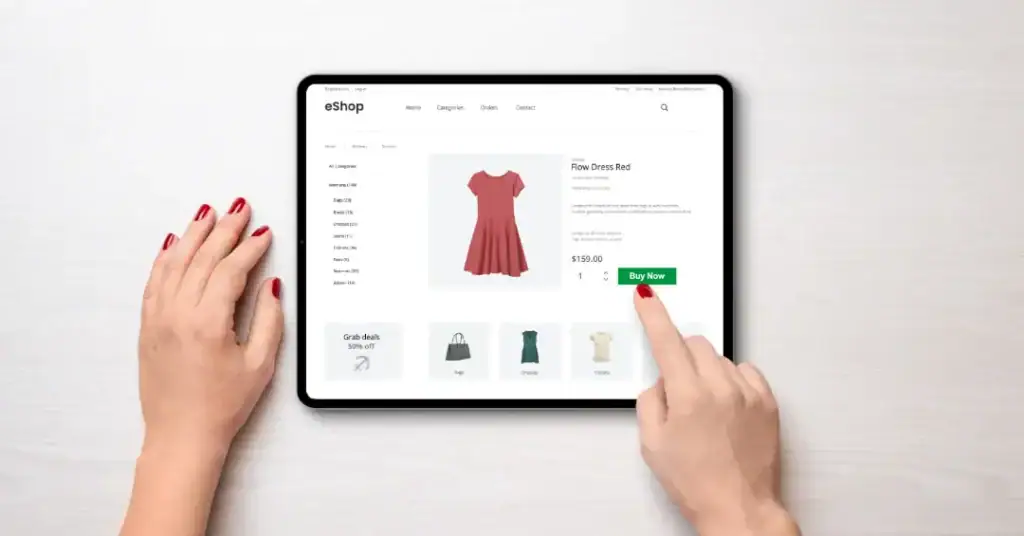
But before we get into that, let’s ensure we’re on the same page about what it means to “set an ecommerce conversion target.”
Long story short: Your conversion rate is the percentage of visitors who complete whatever action you want them to take. That could mean purchasing, signing up for your email list, adding items to their cart, or something else entirely.
For example, If 100 people visit your site and 5 buy something, your conversion rate would be 5%.
Your conversion targets are just the ideal ranges or benchmarks you’ve set for these metrics — whether based on industry averages or performance data from previous months/years/quarters.
Here are some common examples:
- Overall conversion rate (target: 2-3%)
- Shopping cart abandonment rate (target: under 70%)
- Email opt-in rate (industry averages are about 1-5%)
But don’t just take my word for it. Backlinko has collected some fascinating stats:
- The average overall website conversion rate across all industries is 2.86%
- The top 10% of stores have rates at or above 11.45%
- Meanwhile, the bottom quarter typically converts at less than 1.03%
- And the top quarter does at least 5.31%+
In other words… hitting these targets can make or break your store’s success. And if you’re in that bottom 25%, you’re probably leaving a lot of money on the table.
The 5 Baked-In Ingredients for High Ecommerce Conversions
Sure, conversion optimisation involves many tactics and strategies…but only if you've got the basics nailed first. Think of these as the essential ingredients you need to be baked into your online store before worrying about anything else:
1. Lightning Fast Page Speeds
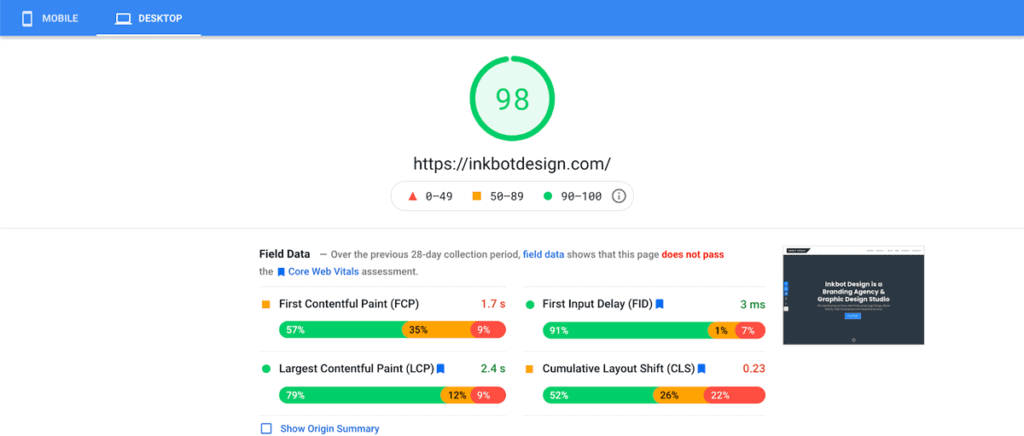
In 2024, if your website makes potential shoppers feel like they’re slowly moving like a snail as it loads, you can kiss conversions goodbye. You only get one chance to make a first impression on today’s consumers, and if your ecommerce pages take too long to load, they will leave.
These days, people have more than enough options for every product under the sun right at their fingertips. So why would they wait around for your page to load?
To stay competitive in 2024 and beyond, you need lightning-fast page load times across desktop and mobile. And I mean faaaaaaast.
Google recommends that all website pages load within three seconds or less. That means you have three seconds from when someone clicks on your link for the page to display before users get frustrated and leave entirely.
Here are a few quick ways to speed up your site:
- Compress and optimise all images
- Use a content delivery network (CDN)
- Minify CSS, JavaScript, and HTML files
- Leverage browser caching (I’m not going to explain this one because it went over my head, too)
There are no more excuses when it comes to speeding up your site. It doesn’t matter how far along you are in building your business or how big of a problem this may seem — fix it now before it fixes you down the line.
But don’t just take my word for it — these stats speak volumes:
As page load times go from one second to seven seconds, the probability of a mobile site visitor bouncing away increases by 113%!
53% of mobile users will leave a site that takes longer than three seconds to load; also, 47% of them expect a loading time of a maximum of two seconds
Speeding up your site isn’t just about preventing customers from leaving — it’s also about getting more eyes on what you have to offer in the first place.
So get busy and make your pages load faster than the speed of light. Your conversions will thank you later.
2. A Mobile-Friendly Experience
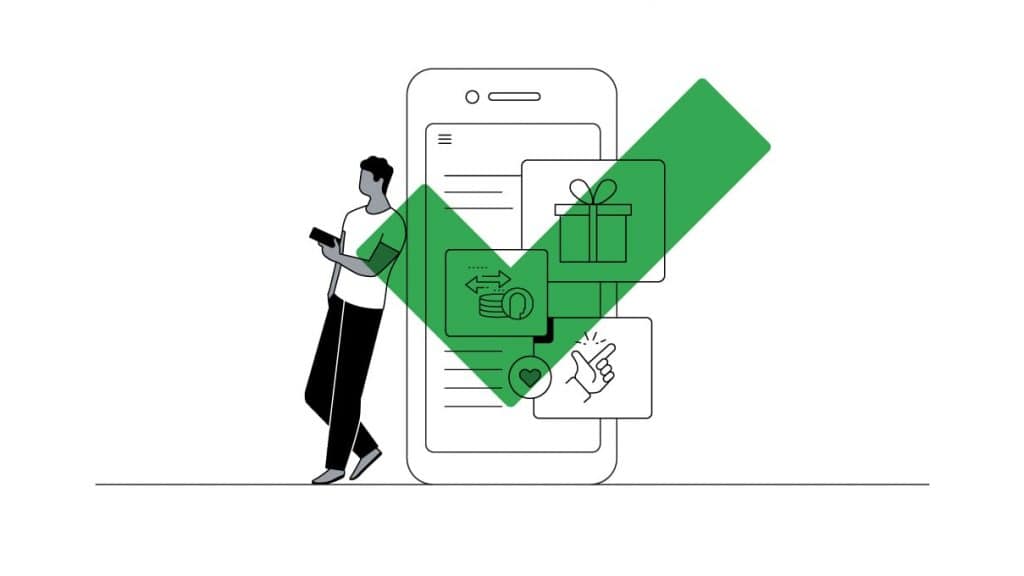
Are you still holding onto that old, desktop-only site? It’s 2024, my friend—it's time to wake up and smell the smartphone revolution.
Mobile devices make up more than half of all web traffic. So, if you don’t have a responsive ecommerce site that works perfectly on every device, you’re turning away customers in droves.
An optimised mobile shopping experience means visitors can:
- Navigate your site and menus with ease
- See your product images as clearly as possible
- Read descriptions without squinting or zooming
- Input their payment and delivery info quickly
- Complete the checkout process effortlessly
Go ahead and visit a competitor’s mobile site for two minutes. Try to click those tiny links with your fat fingers. Zoom in and scroll around just to read some product info. Be honest: it sucks, right? You’d ditch that site immediately.
Don’t force your would-be customers through the same torturous ordeal. Fix whatever’s wrong with your mobile ecommerce experience now, or these hard-earned visitors will leave faster than you can say “responsive design.”
3. Clear, Compelling Product Visuals and Descriptions
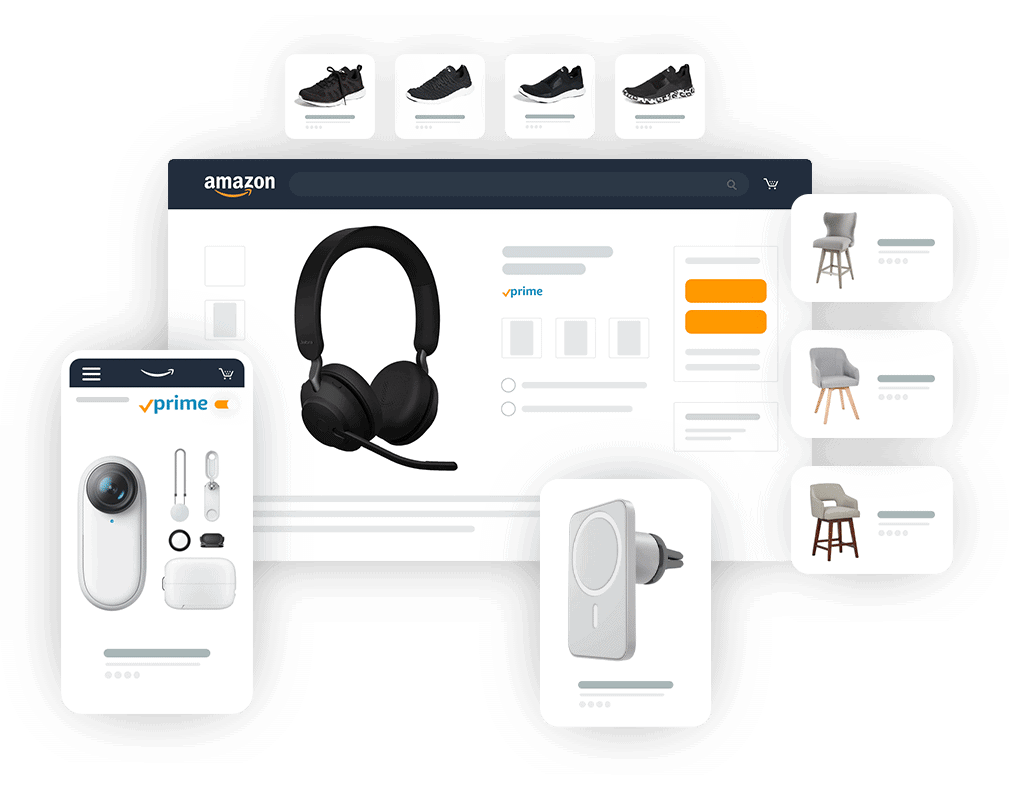
Imagine yourself as a buyer for just a second. You visit an ecommerce site selling, I don't know… folding camping chairs. There are a few different options available. But whoopsie! The product descriptions are barely there.
“Blue chair for camping”
“Green folding camp chair, steel frame”
You'd most likely think: “Duh, I already knew that much from the pictures.” Then, you leave that site in the dust and take your business elsewhere.
To make sales and keep customers interested, you need clear product images and descriptions that are also compelling by covering:
- Essential details, features & specs
- Actual measurements and dimensions
- Material info, colour/finish options
- Authentic customer images or product videos
- Motivating benefit statements
What's the key? Paint a vivid mental picture and sell the sizzle instead of just the steak. You want buyers to think, “Oh, I can see myself sitting on this chair! It'll make my next camping trip so much more comfortable.”
4. Prominent Trust Signals and Social Proof
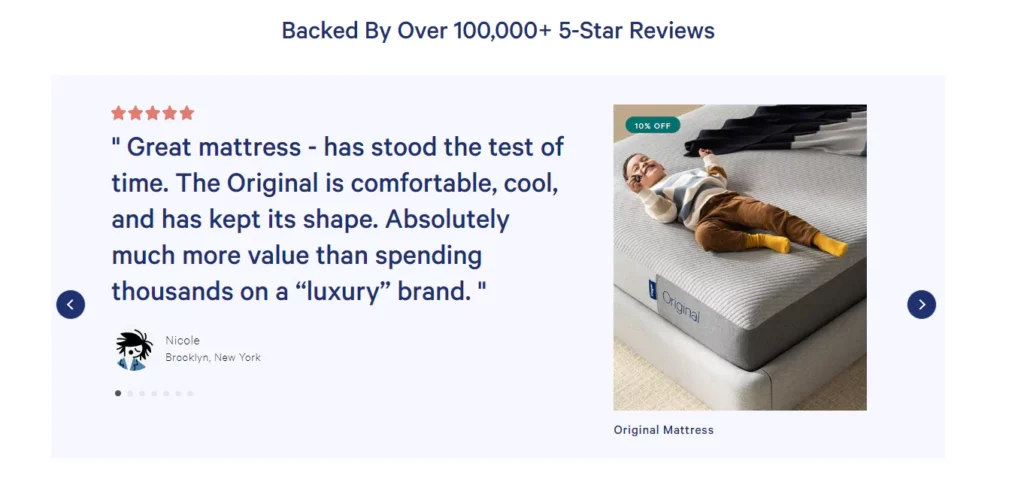
Here's the bottom line about eCommerce: Trust is still a significant factor, regardless of your product's quality. Essentially, those visiting your website are total strangers—men and women who have never interacted with you.
If there's something remotely fishy about your website or if it seems insecure in any way, shape, or form. Then those people that you worked so hard to get won't stick around long enough to buy anything from you. They'll just take their hard-earned dough and give it to a competitor they trust more.
So, to increase customer conversion rates, you must go out of your way to include as many eCommerce trust signals as possible on your site. Many make sense without making everything cluttered and difficult for visitors to navigate.
Some examples of this would be:
- Making security badges easily visible
- Including customer reviews that are easy for visitors to find
- Showing off how many customers/sales you've made thus far
- Posting seals of approval from 3rd parties that viewers will likely recognise
- Making your contact information easily accessible (and showing where your physical locations can be found)
Now, sure, one product review or a tiny security icon isn't going to break or make anyone's decision on whether they should hand over their credit card info. But accumulating these things across your site will give everyone essential peace of mind when it comes time for them to pull out their wallets and buy what you're selling.
Lastly — let's talk about social proof. It goes hand in hand with building trust — primarily online. The more you show visitors that real people actively love and use what you sell, the more comfortable everyone will feel about hitting purchase at checkout.
5. Fast, Friendly, Friction-Free Checkout
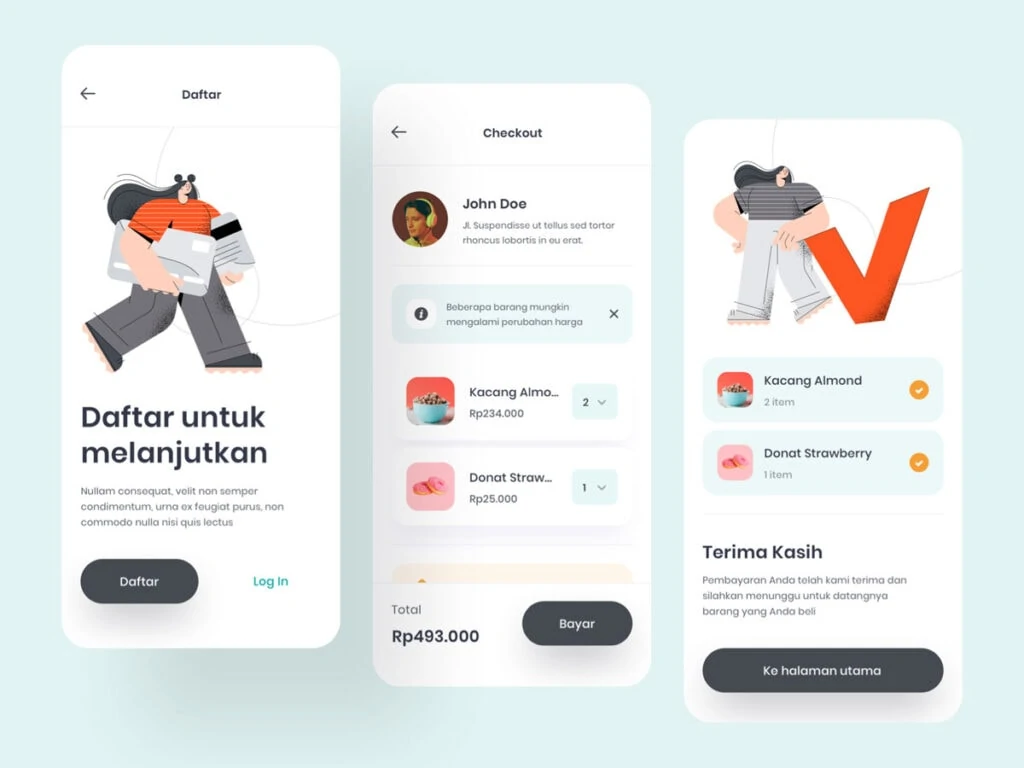
You’ve done your job well enough. You’ve got visitors excited and excited about what you offer on your online store, but once they decide to take action and buy something, all hell breaks loose.
The checkout process is not supposed to ruin the experience or force the customer to go through hoops. It’s supposed to be a quick and easy process where the buyer can quickly fill in their information, hit “Buy,” and move on with their day, knowing they made a great purchase.
It should never be:
- So long that people start second-guessing why they’re buying it in the first place
- Full of links that could distract them from finalising the purchase
- Outdated or unclear, so it leaves them feeling anxious or confused
- And definitely shouldn’t have too many form fields because nobody has time for that
After someone decides they want something, you don’t want them to change their mind about how much effort it’ll take. At this stage in their journey, any unnecessary actions could ruin your conversion rate big time.
Keep it simple and out of their way.
Now Let's Talk Tactics: 7 Must-Try Conversion Boosters

With that critical foundation in place, optimising the snot out of your core ecommerce conversion metrics is time! Have a look at these proven strategies that'll have you swimming in more revenue in no time:
1. Always Split-Test and A/B Test
Relying on hunches and guesswork is a surefire way to sink your online sales. You must take your conversion hunches and validate them with split-testing and A/B testing!
Whether it's varying your product page designs, opt-in offers, checkout flows, or email marketing campaigns, split-test them!
2. Master the “Limited Supply” Marketing Triggers
You know that panicked feeling when you want something, but it's limited or running out? Yeah, that's a potent psychological motivator.
By subtly working “limited supply” marketing triggers into your ecommerce store, you can amp up those purchase conversions like crazy:
- “Only three left in stock!”
- “This deal ends in 24 hours…”
- “Just 50 spots remaining at this price!”
Humans are hard-wired to want what's scarce — it's why stadium tours “sell out” and limited product drops create such frenzied hype. Use scarcity in your marketing, but don't lie or mislead customers.
3. Offer Free Shipping (Or Make it Worthwhile)
Nobody enjoys shelling out extra cash for shipping — especially since Amazon has conditioned us all to expect free and fast delivery. So, try to build shipping costs into your product pricing to offer free shipping.
If that's not viable for your business model, set a reasonable free shipping threshold (like orders over $50). You can also offer free shipping with subscriptions or paid membership levels.
During checkout, be transparent about shipping costs, delivery timing, and other logistics. Unexpectedly high fees are one of the top reasons for shopping cart abandonment!
4. Retarget Prospects with Enticing Offers
No ecommerce conversion optimisation strategy is complete without retargeting! Don't let interested prospects slip through the cracks after visiting your store.
Retarget them on other platforms and channels to reel them back in with tailored offers, discounts or other incentives to seal the deal:
- Launch social media retargeting campaigns
- Run Shopping and Remarketing ads on Google
- Use push notifications for cart abandoners
- Remarket through email drip campaigns
Like anything, you can overdo it and annoy people with too much retargeting – but overall, it's still a compelling way to boost sales.

5. Follow Up Strategically with Email
Speaking of email, I can't overstate how critical this marketing channel is for maximising your ecommerce conversions over time.
From abandoned cart sequences to promotional newsletters, follow-up ecommerce emails keep your brand and products top-of-mind. They also give you a direct line of communication to provide value and nurture prospects into loyal customers.
Just don't sleep on the email conversion metrics! Track and aim to improve your:
- Email open and click-through rates
- Ecommerce conversion rates by email source
- Overall email marketing ROI
Trust me, having a strategic email game plan tied to measurable targets is necessary for real ecommerce growth.
6. Get Your Fulfilment Strategy Firing On All Cylinders
Some online stores understandably start shipping products themselves from a home office or garage. But at a certain point, a well-oiled fulfilment process becomes critical for your bottom line.
If shoppers are waiting weeks for their orders, receiving damaged items or being hit with unexpected costs — you're demolishing trust and killing repeat business before it can even happen.
Whether optimising in-house logistics or outsourcing to a third-party fulfilment centre, take steps to control your inventory management, warehousing, shipping, and tracking. Deliver a fantastic post-purchase experience, and you'll have customers for life!
7. Leverage Conversion Optimisation Tools and Services
As a savvy ecommerce entrepreneur, you only have so much time and energy to invest in optimising conversion optimisation.
Rather than stretching yourself too thin, leverage the wealth of unique tools and services out there to maximise your conversion rates efficiently:
- Heat mapping and user recording apps
- Personalisation and recommendation engines
- Conversion rate optimisation (CRO) agencies
- Analytics platforms to dig into conversion data
- AI-powered chatbots and live chat support
With the right tools in your arsenal and outside expertise, you can turbocharge conversions in a scalable, data-driven way.
Final Money-Making Thoughts
Look, shattering your ecommerce conversion targets is just plain tough. The average online store converts less than 3% of traffic — which puts into perspective how much revenue is left on the table.
But what is the payoff for pushing past the average? Monumental.
You can reach that double-digit conversion nirvana by nailing the basics of a high-converting online store and consistently testing/optimising along the way. That means exponentially more revenue and profitability from the same volume of web traffic.
So what are you waiting for? Start prioritising your conversion rates today as a central part of your ecommerce growth plan. Minor tweaks can mean the difference between an okay side income and legitimate, mind-blowing online business success.
5 Common Ecommerce Conversion Rate FAQs
Still, have some burning questions about conversion targets and metrics for your online store? Let's run through some frequently asked Qs:
What is a good ecommerce conversion rate?
There's no universal “good” conversion rate, as benchmarks can vary drastically by industry, product category, traffic sources, etc. However, most studies cite anything over 2-3% as an excellent ecommerce conversion rate, with rates over 5%. The top 10% of stores convert over 11.45% of visitors.
How do I calculate ecommerce conversion rates?
To calculate your overall website conversion rate, divide the sales/purchases by your total website traffic over that period. So, if you made 200 sales from 10,000 visitors last month, your conversion rate would be 2% (200 / 10,000). Follow the same formula for other conversions like email opt-ins or added-to-carts, but swap those numbers instead.
What are some top conversion killers for ecommerce sites?
Slow site speeds, poor mobile experiences, hidden costs, complicated checkout flows, lack of security/trust indicators, unhelpful product info and too many distractions are among the most significant conversion killers. Even tiny friction points can cause visitors to abandon before buying.
How can I improve ecommerce conversions on mobile?
Prioritise a fast, seamless mobile shopping experience tailored for smaller touchscreens. Allow instantaneous page loads, simplify navigation menus, make call-to-action buttons thumb-friendly, optimise mobile checkout, incorporate security badges and leverage click-to-call functions. Continually test and tweak!
Which metrics matter most for ecommerce conversion rates?
While your overall website purchase conversion rate is essential, closely track shopping cart abandonment, opt-in form conversions, retargeting campaign performance, email engagement/revenue and revenue-based metrics like average order value. Bundling and upselling can also impact conversions.
Consistent Conversion Optimisation is the Key
The bottom line? Reaching ambitious ecommerce conversion goals requires a strategic, ongoing optimisation process fuelled by data and testing — not just guesswork.
Focus first on removing any friction points or barriers to conversion. Deliver an outstanding shopping experience across devices through fast load times, persuasive visuals, transparency and intuitive user flows.
Layer on intelligent conversion tactics like urgency/scarcity cues, retargeting, email nurturing and free shipping offers. But avoid aggressive sales tactics that erode trust.
Track your crucial conversion metrics and continuously A/B test changes to improve iteratively. Validate what's working and quickly cut what's not. Arm yourself with the right tools and expertise to stay ahead.
With diligent conversion optimisation practically baked into your store's DNA, you'll reliably draw more revenue value from each visitor. Your ecommerce conversion targets won't just be lofty dreams – they'll be inevitable realities propelling your business forward.
Over to You
Feeling inspired and motivated to demolish those stubborn ecommerce conversion hurdles? I hope this guide provided a solid action plan to get you started!
Conversion optimisation is a long-term game of marginal gains and persistent testing. Even seemingly minor tweaks and UX improvements can compound into night-and-day differences for your bottom line.
If you have any other questions about mastering ecommerce conversion rates, please drop them below! I'm always happy to riff further on tactics and data-driven strategies.
Get out there and convert more hard-earned store visitors into profitable customers!
